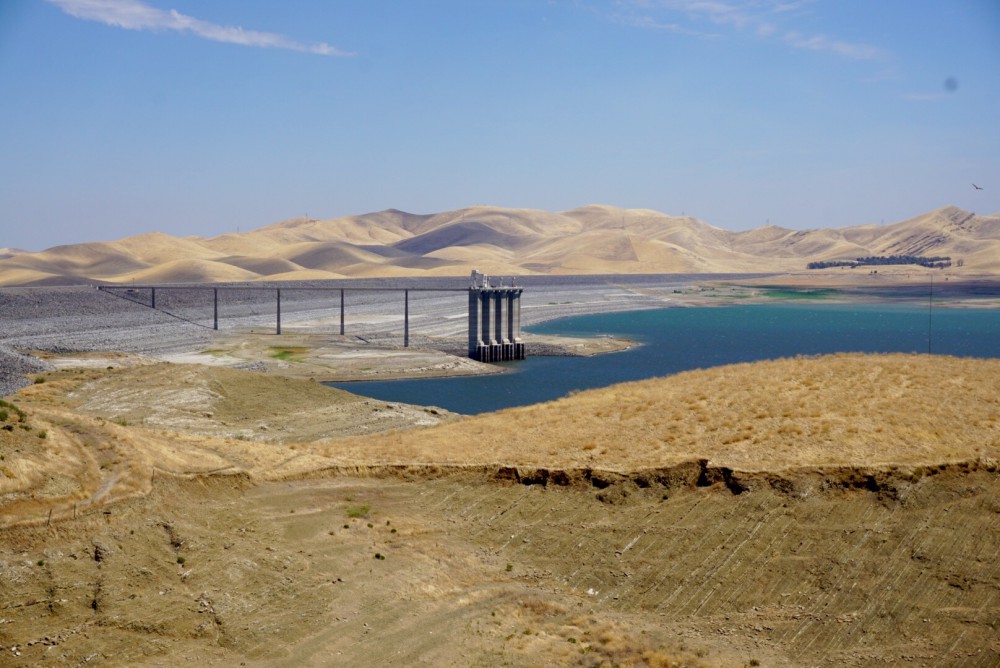With drought conditions continuing to blanket the Western U.S., and farmers struggling to find adequate water supplies, competing interests are pressuring the federal government to cut the water supply farmers are using to grow our food, including alfalfa, which is a foundational food chain crop. In response, the Family Farm Alliance and California Farm Water […]
Statement by the California Farm Water Coalition on Upcoming State Water Board Action That Will Cut Water Supplies to Thousands of Farms
Statement by the California Farm Water Coalition on Upcoming State Water Board Action That Will Cut Water Supplies to Thousands of Farms “It is unbelievable that just two short years after our reservoirs were largely full, California is so water short that the State Water Resources Control Board is seriously considering completely eliminating water supplies […]
It Is Time to Modernize Our Water Supply Infrastructure
It Is Time to Modernize Our Water Supply Infrastructure “Today’s letters by over 150 agricultural organizations and water interests to President Trump and Congress underscores the need for investments in our water supply infrastructure to protect the nation’s food supply “The COVID-19 pandemic has revealed how much we all depend on a reliable food supply […]
Statement by Mike Wade, Executive Director of the California Farm Water Coalition on the Initial Allocation Announcement by the Bureau of Reclamation
Statement by Mike Wade, Executive Director of the California Farm Water Coalition on the Initial Allocation Announcement by the Bureau of Reclamation February 25, 2020 “Today’s announcement by the Bureau of Reclamation of a 15 percent initial allocation for water supplies south of the Delta is clearly the result of the dry hydrology California is […]
Statement on the Adoption of the New Biological Opinions
Statement by California Farm Water Coalition Executive Director Mike Wade on the Adoption of the New Biological Opinions “For the first time in more than a decade, the federal rules known as Biological Opinions are being updated. These rules exist to protect threatened species in the San Francisco Bay-Delta region while also meeting the water […]
Statement by California Farm Water Coalition Executive Director Mike Wade on the Release of the New Biological Opinions
Statement by California Farm Water Coalition Executive Director Mike Wade on the Release of the New Biological Opinions The release of the new Biological Opinions on salmon, Delta smelt and other species is good news for water users and the environment. Moving from an approach that used a calendar to make ecosystem decisions to one […]
STATEMENT: Voluntary Agreement on Water Represents the Future and Deserves Prop 68 Funding
STATEMENT: Voluntary Agreement on Water Represents the Future and Deserves Prop 68 Funding By Mike Wade, Executive Director California Farm Water Coalition California has always prided itself on cutting-edge ideas. It is the place others turn to for new solutions to old problems. We are currently faced with a choice to continue that tradition of innovation […]
Statement by Mike Wade, California Farm Water Coalition Executive Director On the Release of New Biological Assessments
Statement by Mike Wade, California Farm Water Coalition Executive Director On the Release of New Biological Assessments SACRAMENTO, CA – Recognizing the failure of the existing biological opinions issued a decade ago by the U.S. Fish and Wildlife Service (USFWS) for Delta smelt and by the National Marine Fisheries Service (NMFS) for salmon, the Bureau of […]
CFWC Statement on Voluntary Agreements Presented to the State Water Board on its Bay-Delta Water Quality Control Plan
CFWC Statement on Voluntary Agreements Presented to the State Water Board on its Bay-Delta Water Quality Control Plan “Water users and the State of California have brought to the table almost 1 million acre-feet of water and almost $2 billion in funding to implement an unprecedented set of ecosystem restoration goals. It is a comprehensive, […]
CFWC Statement on End of Drought
“Today the Governor declared an end to California’s drought and his administration issued plans to permanently entrench many of the drought restrictions and water use efficiency requirements it brought about. “California farmers work every day to make the most out of every drop. While total agricultural water use in California has remained relatively constant […]
